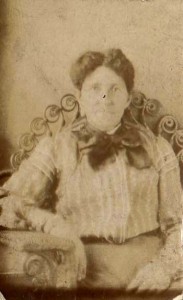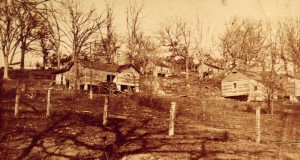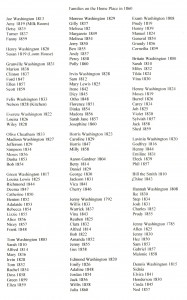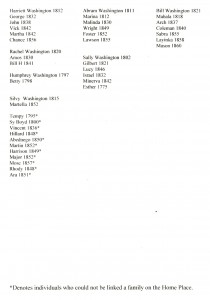The entire Court Order book collection of the Southampton County, Virginia Court from 1749 through the early 1880s has been digitalized. This includes 57,000 pages, involving approximately one million names. This information is free online at: www.wiki.familysearch.org/en/Southampton_County,_Virginia. This collection is a goldmine for African Americans tracing their ancestors who once lived in Southampton County. Many of the books that have been digitized were 300 to 700 pages. Court Order books from the 1700s to the end of the slave trade lists the names of Africans when they were first brought to the area, their ages, owner’s names, and in a few cases the ships on which they were brought over. Wills and estate settlements lists the names of slaves, descriptions and family relationships. If your ancestors came from Southampton County, Virginia, you must check out this collection. Thanks go to Southampton Circuit Court Clerk, Richard Francis, and the volunteers of the Brantley Association of America who undertook this huge project in 2009 and 2010.
Posts Tagged ‘Slave Family’
Digitalization of Southampton County Virginia Records Opens New Doors for African American Research
Sunday, April 17th, 2011Divorce Case of Former Slaves Reveals Family History
Friday, October 23rd, 2009Today divorce is very common, but in 1800s and early 1900s it was rarely heard of, especially among African Americans. In my research I found this extraordinary divorce case of two former slaves in Robertson County, Tennessee which detailed the history of their family.
Alford Pitt 1830-1900 and his wife Arry Fort Pitt 1836-1918 were married during slavery and had eleven children. Alford was a carpenter and later accumulated more than 500 acres of land. He had African American and white sharecroppers working his land.
In 1900, Arry filed for divorce from Alford stating that he had an affair with two black women and one white one. She stated that she had worked hard to help him amass everything they owned and she was entitled to half. Alford claimed that she had not helped him accumulate his wealth and felt since they married during slavery and never married after they were emancipated that she was not legally his wife and therefore not entitled to any of his property.
The divorce case put a great strain on the Pitt family, their friends and neighbors. Arry had more than fifty witnesses to prove her claims and Alford had nearly as many to support his. Half the children sided with their mother and the others their father.
Arry was represented in court by a family member of her former owners. In 1866, a law was passed in Tennessee which made all former slave marriages legal if the couple continued to live as man and wife.
The courts ordered Alford to give Arry 100 acres of land, $1,000, a horse and buggy and other livestock. Shortly after the verdict Alford died from complications of a cold that he caught from walking to court in bad weather.
Some of the Pitt property is still owned by their direct descendants. A street that runs through the property bears the family name.
Slave Housing on Southern Plantations
Monday, October 5th, 2009Housing for slaves varied from plantation to plantation depending on the owners. Most slave quarters were generally arranged in avenues or streets and located behind the mansion or ‘Big House.’ They were strategically placed to give the owner or overseer a clear view of the slaves, so their activities could be easily monitored.
The slave settlement at Wessyngton Plantation, however, did not fit this pattern. The lack of a clustered settlement pattern at Wessyngton was somewhat unusual during antebellum times. This was primarily due to the hilly topography of the plantation. The scattered pattern gave the slaves at Wessyngton more freedom and made it far more difficult to keep them under constant surveillance.
Typically, slave housing at Wessyngton consisted of hand-hewn one-room log cabins measuring 20 by 20 square feet with brick end chimneys. Some cabins were 18 by 36 square feet. Each cabin had log flooring and a loft, where children slept.
Each cabin housed an average of six individuals. Family sizes varied depending on the number births, deaths and marriages.
Surnames Used by African American Slaves
Friday, August 28th, 2009There has been much debate among scholars, historians and genealogists whether enslaved African Americans used the surnames of their last owners, previous owners, or a surname that had no connection to slavery.
Location the owner of one’s ancestor is crucial for an African American genealogist to trace his family before 1870.
In more than thirty years of researching my ancestors and hundreds of others enslaved on one of America’s largest plantations, slaves owned by mid-sized planters and small farmers, reviewing thousands of documents I have come across various situations that might give others clues on what to look for.
There are many factors to consider in determining what surnames African Americans used.
Although it is not widely known, some African Americans used surnames before they were emancipated. This happened mostly on large plantations where several individuals had the same first names and a surname was used to distinguish them from one another.
African Americans were known by these surnames in the slave community and often recorded by slave owners on plantation documents.
In small communities where census takers and county officials knew African Americans personally and their previous owners, they often recorded the former slaves with the surnames of their last owners. One former slave Bill Scott from Wessyngton reported in his pension application for military service that when he enlisted in the Union Army officials put down his surname as Washington. He stated that he had always been known by his father’s surname Scott, even before he was freed.
Former slaves often made up surnames based on their occupations. A Wessyngton slave named Bill who was the plantation’s blacksmith was known as Billy the Smith during slavery. After emancipation, he became William Smith. Another slave named Bill who attended the sheep became Bill Shepherd.
When slave owners married, they often received slaves as wedding gifts and inheritances from their wife’s family. As a result, many slaves used the surnames of their owner’s wife’s family. When Wessyngton’s owner George A. Washington married Margaret Lewis in 1849 her father gave the couple twenty-nine slaves. The majority of these slaves used the surname Lewis instead of Washington. If searching for a slave owner with the same surname of your ancestor fails, check marriage records for the slave owners. This may reveal your family used the surname of the slave owner’s wife’s family.
African Americans tended to use surnames associated with their own families instead of the last slave owner. In the late 1830s, Nathaniel Terry of Todd County, Kentucky died leaving a plantation of fifty slaves. Five of the slaves were sold to the Washingtons and brought to Wessyngton. Several of the other slaves were sold to various slave owners. After emancipation, they all used the Terry surname because their families had been with the white Terry family for generations.
Former slaves also interchanged surnames on census records. It is not uncommon to see an African American family listed with one surname in 1870 and another in 1880. This is due in part to officials imposing surnames on them based on their last owners. John Lewis was born in 1831; in 1844 he and several family members were given to George A. Washington of Wessyngton. In 1870, he is listed as John Washington. On all subsequent census records, he is listed as John Lewis. This was the case with several others from Wessyngton.
Another myth is once African Americans were sold they never saw their families again. This is true in some cases but not all. In small communities when slaves were sold, they were often bought by someone in the area. Thomas Black Cobbs was owned by a small slave owner Catherine Black. At her death when Thomas was ten, he was sold to Solomon Cobbs who lived nearby. Thomas’ mother, younger brothers and sisters remained with the Black family. After emancipation, he moved back with his mother, brothers and sisters and used the Cobbs surname. It had always been passed down in the family that Thomas has been owned by the Blacks.
In instances where slaves were sold from their families and they did not retain their previous owners’ surnames, they named their children for parents, sisters and brothers to keep a connection with their families. In 1836, William Turbeville died leaving an estate with several slaves who were brothers: Turner, Nelson, Simon, Jordan, and Jacob. They were all sold to different owners: Connell, Rose, Johnson, and Hughes respectively. The brothers were sold when they were very young and remained with their last owners nearly thirty years. In 1870, all of them were listed with the surnames of their last owner; however, each one of them named their sons for one of their brothers.
Former slaves often used surnames names of historical figures such as Washington, Jefferson or Jackson. Others who wanted no connection to their former owners used surnames like Freeman or Freedman. In these cases, unless the name change had been passed down in the family by oral history, it would be impossible to trace the family back any further. This is another instance of oral history being a key component in tracing African American ancestry.
Enslaved African American Families on Wessyngton Plantation in 1860
Sunday, July 12th, 2009
In 1860 Wessyngton Plantation was the largest tobacco plantation in the United States. The Washington family also held the largest number of enslaved African Americans (274) in the state of Tennessee. 187 of them were held on what was called the “Home Place” near the Wessyngton mansion. Eighty-seven others were held on a part of the plantation known was the “Dortch Place.”



